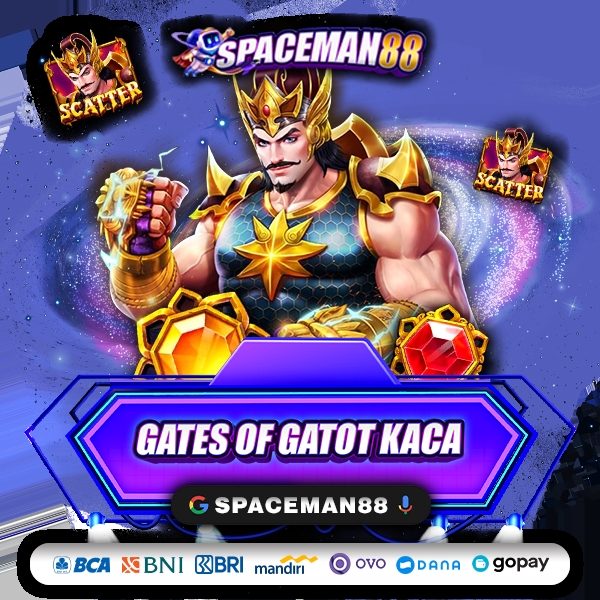Content
Below we look at a selection of the most popular AMMs and some of the key differences between them. Slippage is the difference between the expected price of a trade and the actual price following the execution of the trade. When a trader places a large buy order on an illiquid token, the price can increase dramatically. Naturally, the same could happen in reverse when a trader executes what is amm a large sell order, pushing the price down. The more liquidity an AMM has, the less slippage users experience, which in turn attracts more liquidity. Chainlink Price Feeds already underpin much of the DeFi economy and play a key role in helping AMMs accurately set asset prices and increase the liquidity available to traders.
Risks of Using AMMs To Exchange
Discover the different types of cryptocurrency, including Bitcoin, stablecoins, and NFTs, along with their key features and real-world applications. To get started in DeFi, simply buy cryptocurrency via MoonPay using your credit card or any other preferred payment method. This allows AMMs to actively adjust the price in their market to be more in line with the external market price. Uniswap is a market maker giant with over $3 billion total value locked (TVL), dominating over 59% of overall DEX volume. The https://www.xcritical.com/ competitive advantage of Uniswap lies in its peerless high liquidity, financial incentives in UNI rewards, and technological evolution.
Future Outlook and Developments in AMM Technology
- This fundamental shift from traditional market-making mechanisms introduces a new era of trading, where liquidity is provided by pools instead of market players, ensuring constant buy and sell prices.
- Traditional markets often rely on intermediaries or market makers to ensure liquidity, who may demand a premium for their services.
- The supply-demand ratio of cryptocurrency trading pairs determines their exchange rates.
- This also reduces the risk of slippage, since prices are more in sync with other markets.
- An Automated Market Maker is a type of decentralized exchange protocol that relies on a mathematical formula to price assets.
- This revolutionary system has altered the way we trade and invest, making it crucial for anyone in the finance field to understand its mechanics and implications.
The mechanism behind PMM is to actively adjust prices of assets in a liquidity pool based on external data. One of the most significant benefits of using an automated market maker exchange is that users are not reliant on centralized entities or intermediaries to manage critical details like their private keys. Automated market maker exchanges do not request users’ private keys and cannot access users’ funds without explicit permission. As we covered earlier, an automated market maker is just another variety of decentralized exchange designed to resolve some of the issues faced by its predecessors.
Trade Using Real-time & On-chain Data!
Another thing that you should know about AMMs is that they are ideal for arbitrageurs. For those that are unfamiliar with this term, arbitrageurs profit off inefficiencies in financial markets. They buy assets at a lower price on one exchange and sell them instantly on another platform offering slightly higher rates. Whenever there are disparities between the prices of pooled tokens and the exchange rate of external markets, arbitrageurs can sell or buy such tokens until the market inefficiency is eliminated. Impermanent loss happens when the price ratio of deposited tokens changes after you deposited them in the pool. This is why AMMs work best with token pairs that have a similar value, such as stablecoins or wrapped tokens.
Liquidity Provider (LP) Dilution
They also help in risk management since adjusting parameters dynamically based on external market conditions can help mitigate the risk of impermanent loss and slippage. Curve Finance is an automated market maker-based DEX with a unique positioning of being a dominating stablecoin exchange. This enables Curve to be a reliable DEX with low slippage since prices of stablecoins are usually less volatile than many other cryptocurrencies (usually within a price band of $0.95 – $1.05). Constant product market makers (CPMMs) are the first type of automated market maker (AMM), introduced by Bancor in 2017. A year later, the launch of Uniswap made the CPMM model even more popular.
Problems of First-Generation AMM Models
As an incentive, the protocol rewards liquidity providers (LPs) with a fraction of the fees paid on transactions executed on the pool. In other words, if your deposit represents 1% of the liquidity locked in a pool, you will receive an LP token which represents 1% of the accrued transaction fees of that pool. When a liquidity provider wishes to exit from a pool, they redeem their LP token and receive their share of transaction fees. At their essence, AMMs are decentralized protocols that enable digital assets to be traded automatically and without the need for traditional market makers.
What Are Examples of Different Types of AMMs?
In traditional systems, assets may be illiquid or not frequently traded, leading to outdated or inaccurate pricing. AMMs continuously adjust prices based on supply and demand dynamics through their algorithmic design, offering more current and fair market prices. Over the last couple of years, AMMs have proven to be innovative systems for enabling decentralized exchanges. In this time, we have witnessed the emergence of a slew of DEXs that are driving the ongoing DeFi hype. While this does not mean that the approach is flawless, the advancements recorded in the last 12 months are indicative of the several possibilities that AMMs provide. So there’s no need for counterparties, but someone still has to create the market, right?
However, decentralized exchanges (DEXs) and automated market makers (AMMs) are non-custodial. Not only does this mean that users have control of their assets, but it also means that assets cannot be seized, frozen, or restricted in the same way that they can be with CEXs. To counter this problem, centralized exchanges rely on market makers, which are usually institutional traders or financial institutions, to provide liquidity by creating multiple bid and ask prices. To mitigate this occurrence, some crypto exchanges employ the services of professional traders — in the form of brokers, banks and other institutional investors — to continuously provide liquidity. These liquidity providers ensure that there are always counterparties to trade with by providing bid-ask orders that would match the orders of traders.
How can the current AMM model be improved?
“Impermanence” assumes that if the assets revert to the prices where they were originally deposited, the losses are mitigated. However, if you withdraw your funds at a different price ratio than when you deposited them, the losses are very much permanent. In some cases, the trading fees might mitigate the losses, but it’s still important to consider the risks. One of the most widely used automated market maker platforms is Uniswap.
To incentivize liquidity providers to deposit their crypto assets to the protocol, AMMs reward them with a fraction of the fees generated on the AMM, usually distributed as LP tokens. The practice of depositing assets to earn rewards is known as yield farming. The approach differs in the case of a decentralized automated market maker exchange; for trades to occur successfully, there must be constant liquidity. These exchanges rely on what are known as liquidity pools and liquidity providers. These two elements form the critical backbone of the success of decentralized exchanges. To mitigate slippages, AMMs encourage users to deposit digital assets in liquidity pools so that other users can trade against these funds.
Liquidity providers take on the risk of impermanent loss, a potential loss that they might incur if the value of the underlying token pair drastically changes in either direction. If the loss is greater than the gain obtained through collecting trading fees, the liquidity provider would have been better off just HODLing the tokens. DEXs rely on a special kind of system called automated market makers (AMMs) to facilitate trades in the absence of counterparties or intermediaries.
The process involved in providing liquidity is what we call market making, and those entities that deliver liquidity are market makers. An automated market maker (AMM) is a type of decentralized exchange (DEX) protocol that relies on a mathematical formula to price assets. Instead of using an order book like a traditional exchange, assets are priced according to a pricing algorithm.
They allow digital assets to be traded in a permissionless and automatic way by using liquidity pools rather than a traditional market of buyers and sellers. AMM users supply liquidity pools with crypto tokens, whose prices are determined by a constant mathematical formula. Liquidity pools can be optimized for different purposes, and are proving to be an important instrument in the DeFi ecosystem.
One of the remarkable features of AMMs is their contribution to liquidity in the DeFi market. In traditional finance, liquidity is often provided by large financial institutions or market makers. However, in the DeFi ecosystem, liquidity is crowd-sourced from individual users who deposit their assets into the liquidity pools. In return, these liquidity providers earn fees based on the trading activity in the pool, which is governed by the AMM’s specific protocol. If an AMM doesn’t have a sufficient liquidity pool, it can create a large price impact when traders buy and sell assets on the DeFi AMM, leading to capital inefficiency and impermanent loss.
If the ratio changes by a wide margin, there’s going to be a large amount of slippage. The increase in popularity of DEXs and AMMs is disrupting the traditional exchange listing process and order book model. This has prompted several centralized exchanges to venture into the world of DeFi by offering non-custodial trading platforms. Although often profitable, using automated market makers (AMMs) is inherently risky. Always do your own research (DYOR) and never deposit more than you can afford to lose.
Governance or liquidity tokens can often be reinvested into other pools that accept that token. If such a pool also rewards its LPs with yet another token, these can once again be staked as well to maximize yield (hence “yield farming”). When a market is illiquid, there aren’t enough available assets or traders within that market. It becomes difficult to execute a trade without significantly affecting the asset’s price on that particular exchange. To trade with fiat currency, users usually need to go through a centralized exchange or other on/off-ramp services to convert fiat to cryptocurrency before interacting with AMMs. AMMs can make use of off-chain sources like price oracles to offer reliable price discovery and capital efficiency.
Some of the well-known AMMs include Uniswap, SushiSwap, PancakeSwap, and Balancer. Find out the main differences between Solana and Ethereum as cryptocurrencies and blockchain networks. Curve Finance executed a $2.5 million sUSD-USDC trade that cost less than $2 in gas fees.













































































































